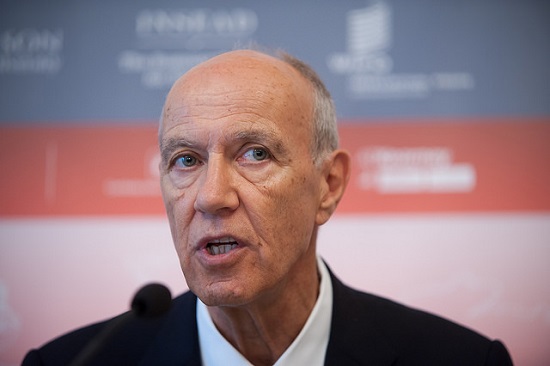Global innovation: Singapore in top 10, Malaysia shines
By A. Asohan September 23, 2015
- Malaysia singled out in special chapter for performing as a high-income country
- Singapore ranks No 1 in the world for innovation inputs, but No 20 for outputs

AT No 7, Singapore was the only Asian country in the top 10 ranking of the world’s most innovative nations, while Malaysia (No 32) and Vietnam (No 52) were among those highlighted as being ‘innovation achievers’ for outperforming their economic peers.
Other such ‘achievers’ were China, India, Jordan, Kenya, and Uganda, according to the Global Innovation Index 2015.
Malaysia, together with China (29), was also highlighted for showing a performance similar to the one of top 25 high-income countries, in areas such as human capital development and research and development (R&D) funding.
The world’s five most innovative nations are Switzerland, the United Kingdom, Sweden, the Netherlands and the United States, in that order. Rounding off the top 10 were Finland at No 6, Singapore which retained its No 7 position, Ireland, Luxembourg and Denmark.
The Global Innovation Index (GII), which ranks the innovation performance of 141 countries and economies around the world based on 79 indicators, is co-published by the World Intellectual Property Organisation (WIPO), Cornell University, and INSEAD.
READ ALSO: To overcome Asia’s barriers, ‘first-mover’ mind-set needed: BCG
The report includes a special chapter on Malaysia and its innovation efforts.
The GII 2015 looks at ‘Effective Innovation Policies for Development’ and shows new ways that emerging-economy policymakers can boost innovation and spur growth by building on local strengths and ensuring the development of a sound national innovation environment, WIPO said in a statement.
The GII 2015 is calculated as the average of two sub-indices. The Innovation Input Sub-Index gauges elements of the national economy which embody innovative activities grouped in five pillars: 1) Institutions; 2) Human Capital and Research; 3) Infrastructure; 4) Market Sophistication; and 5) Business Sophistication.
The Innovation Output Sub-Index captures actual evidence of innovation results, divided in two pillars: 6) Knowledge and Technology Outputs; and 7) Creative Outputs.
“Innovation holds far-reaching promise for spurring economic growth in countries at all stages of development,” said WIPO Director General Francis Gurry (pic below).
“However, realising this promise is not automatic – each nation must find the right mix of policies to mobilise the innate innovative and creative potential in their economies,” he added.

As a whole, the group of top 25 performers – all high income economies – remains largely unchanged from past editions, illustrating that the leaders’ performance is hard to challenge for those that follow.
Some exceptions are the Czech Republic (24) and Ireland (8), as well as China (29) and Malaysia (32), the report said.
In terms of innovation quality – as measured by university performance, the reach of scholarly articles and the international dimension of patent applications – a few economies stand out, it added.
The United States and the United Kingdom stay ahead of the pack, largely as a result of their world-class universities, closely followed by Japan, Germany and Switzerland.
Top-scoring middle-income economies on innovation quality are China, Brazil and India, with China increasingly outpacing the others.
As for ‘innovation achievers’ like Malaysia, these are economies that outperform their peers for their level of gross domestic product (GDP), WIPO said.
A number of low-income economies are innovation achievers, performing increasingly well at levels previously reserved for the lower-middle-income group. Sub-Saharan Africa stands out, with Rwanda (94), Mozambique (95) and Malawi (98) performing like middle-income economies.
These innovation achievers demonstrate rising levels of innovation results because of improvements made to institutional frameworks, a skilled labour force with expanded tertiary education, better innovation infrastructures, a deeper integration with global credit investment and trade markets, and a sophisticated business community – even if progress on these dimensions is not uniform across their economies.
“In all regions of the world, entrepreneurship, leadership and political will are making a difference regarding innovation,” said Bruno Lanvin, executive director for Global Indices at INSEAD, and co-editor of the report.
“Barriers are falling, and innovation achievers are displaying performances higher than what their income per capita would suggest.
“Their experience is now becoming a basis for other countries to emulate their success and turn innovation into a truly global engine for sustainable growth,” he added. (Click infographic below to enlarge).
Singapore spotlight
Singapore maintained its 2014 position at 7th place, also ranking No 1 in innovation inputs because of its first place in the Infrastructure and Business Sophistication pillars, and second place in the Institutions pillar.
However, the GII 2015 report noted that the city-state ranks 20th in innovation outputs, thus achieving quite a low ranking in innovation efficiency (100th).
Singapore remained consistent across most areas of the GII, but with some notable progress in the Political environment (where it improved by 15 places), Ecological sustainability (nine places), Knowledge impact (five places), and Knowledge diffusion (11 places) sub-pillars.
Although the improvement in Political environment is the result of the removal of the press freedom index variable this year – where the country fares poorly – Singapore greatly improved in the GDP per unit of energy use variable, the growth rate of GDP per person engaged variable, and most of the variables in sub-pillar 6.3, Knowledge diffusion.
Conversely, Singapore declined in the Investment (down four places), Trade and Competition (six places), and Knowledge Creation sub-pillars (five places).
Malaysia spotlight
 In 2014, Malaysia performed better than 75% of the countries included in the entire GII sample in Human Capital and Research, Infrastructure, and Market and Business Sophistication, according to the report.
In 2014, Malaysia performed better than 75% of the countries included in the entire GII sample in Human Capital and Research, Infrastructure, and Market and Business Sophistication, according to the report.
In Human Capital and Research, Malaysia improved the most in R&D, moving from 54th position in 2011 to 32nd in 2014. The country also made considerable gains in Institutions, improving especially its business environment.
Since 2012 Malaysia has ranked first in ease of getting credit and very highly in investment-related variables. Apart from creating a favourable business environment, policies have focused on increasing the number of graduates in science and engineering, a variable in which the country has ranked persistently high.
Between 2011 and 2014, Malaysia ranked in the top three positions also in high-tech imports and exports, reflecting its successful integration in global value chains, the report said.
However, Malaysia still needs to make considerable progress in fostering knowledge-based activities and reducing technological dependence, as confirmed by its low scores in Knowledge Workers, Innovation Linkages, and Knowledge Creation.
These are typical issues for net importers of technology; in these cases, developing domestic innovation capabilities is needed to move from absorbing foreign knowledge and technology to creating domestic new knowledge and technologies, the report said.
Chapter 10 of the GII report, Innovation Performance of the Malaysian Economy, by Rajah Rasiah and Xiao-Shan Yap from Universiti Malaya, details how Malaysia is an excellent example of a middle-income country that has done well in areas such as business financing of innovation and commercialisation.
Despite strong commercialisation in business R&D, including in business financing, the country’s relatively poor performance in innovation efficiency shows a need to review government policies on the execution of government-sponsored R&D funds, the writers said.
To download the GII 2015 report (PDF), click here.
Related Stories:
Innovation: More punk rock and counterculture needed
Innovation company PlaTCOM to be self-sustainable by 2020
Malaysia has environment conducive to innovation: GE survey
For more technology news and the latest updates, follow us on Twitter, LinkedIn or Like us on Facebook.



